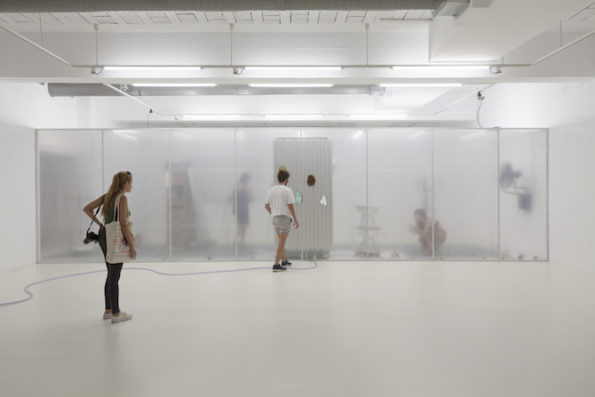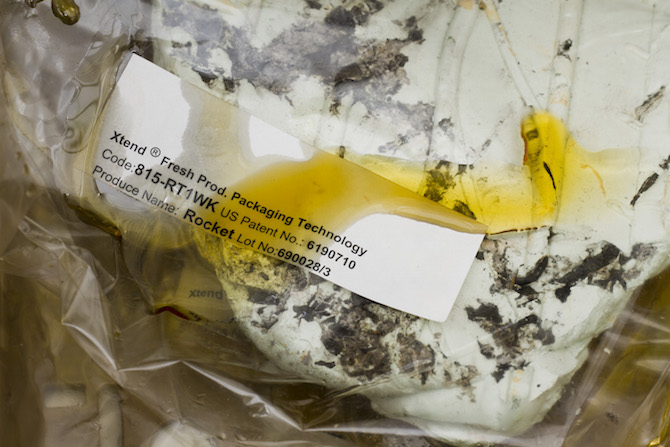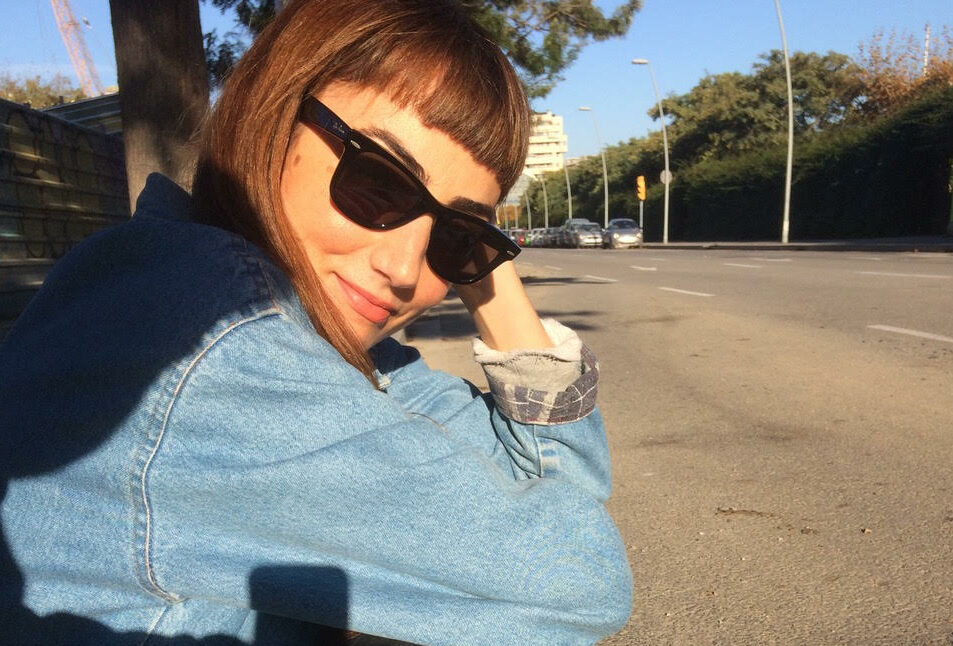Search
To search for an exact match, type the word or phrase you want in quotation marks.
A*DESK has been offering since 2002 contents about criticism and contemporary art. A*DESK has become consolidated thanks to all those who have believed in the project, all those who have followed us, debating, participating and collaborating. Many people have collaborated with A*DESK, and continue to do so. Their efforts, knowledge and belief in the project are what make it grow internationally. At A*DESK we have also generated work for over one hundred professionals in culture, from small collaborations with reviews and classes, to more prolonged and intense collaborations.
At A*DESK we believe in the need for free and universal access to culture and knowledge. We want to carry on being independent, remaining open to more ideas and opinions. If you believe in A*DESK, we need your backing to be able to continue. You can now participate in the project by supporting it. You can choose how much you want to contribute to the project.
You can decide how much you want to bring to the project.

This summer, Martin Llavaneras (Lleida, 1983) erected a sort of hypoxic chamber filled with apples, sprinklers, clays, ferments and a range of objects in Espai13 at Fundació Joan Miró. The work was the result of Fruit Belt, a conceptual and sculptural essay that closed the series entitled ’One Foot Out. Expeditions and Diasporas’ curated by Jordi Antas for the 2016-2017 season. By researching post-harvest and atmosphere control techniques, the proposal tackled concepts such as longevity or senescence, and reflected on issues such as the conservation of the artwork or human relations and interdependence with technological artefacts and the processes of matter. In this conversation we revisit moments in the development of a project that has merited the Artnou Award.
First of all, you always specify that Fruit Belt addresses the concept of longevity and also that of senescence. What is the difference between the two?
Let’s say that the two concepts share the same common framework, that of the passage of time and its material effects. Yet the idea of senescence, for instance, contemplates the fact that a structure is a provisional form of organisation; it has no end in itself given that the actual material flow, that which focuses on its configuration, is programmed to decompose. The notion of longevity, as I see it, limits this continuous oxidation of matter and connects it to parameters of control and temporal rationalisation. In both cases these notions run through the constant tensions between the cultural, the biological and the technological that encapsulate the discursive framework posed by Fruit Belt.
Tetsuro Watsuji said that man discovers himself as existing when he becomes aware of his environmental conditioning: ’Climate, then, is the agent by which human life is objectivised, and it is here that man comprehends himself; there is self-discovery in climate.’ And Jane Bennet describes these environmental circumstances as the insistent way in which things impose their nature on human beings, thus inviting us to include the agency of non-human forces – those operating in nature, in the body and in artefacts – in our ethical considerations because these non-human forces are always reacting to the harm they suffer and are consequently part of the political scene. From the immanent, interdependent and materialist perspective that opens up after the abolition of the nature-culture divide, how do you tackle man’s relationship with technological artefacts in your artistic practice?
For me technology is fundamentally ambivalent and this is what I find most interesting, because it requires an agency and comes up with the answer at the same time as it develops the problem. In this installation, for instance, we see groups of apples in different states of conservation. Many of these apples are in plastic bags (modified atmosphere packaging) specially designed to extend the commercial life of fruit. This controlled atmosphere (that consists in altering the composition of the air surrounding the fruit and slowing down its ripening process) represents technological advance in the manipulation of the fruit. While this technological advance has enabled us to replace the use of aggressive chemical preservatives thanks to the metabolic control of fruit, in turn it has also paved the way for a significant expansion towards new markets. The exhibition tries to unite these contradictions through a pesticide-free product linked to the globalised transportation of raw materials, manipulating the composition of the gases that preserve fruit and adding fossil fuels to the atmosphere of the planet. In this sense, and thinking now of the installation at Espai 13, I felt it would be interesting to allow spectators to navigate these contradictions in an atmospheric way, appealing both to our skin and senses, and to more reflexive and mental perceptions. Hence the smell, the melted caramel, the liquid discharges and the actual decomposition could be triggered by timers, water pumps and nebulisers. Resources were optimised and yet at the same time there was erosion, losses and leaks.

Tell me a bit more about how the project emerged. How did your interest in these techniques arise?
Moving my workshop to a familiar area was an important factor, for it has enabled me to work outdoors and experiment with other formats. For months I’ve been exposed to varying atmospheric, climatic, seasonal conditions, changes of light and damp. From the very beginning I knew I wanted to produce organic works and, if possible, use the raw materials that form the basis of our nutrition. I imagined sculptures of sugar extracted from the pulp of apples. Parallel to this, over several months I held interviews with food engineers, fruit preservation technicians, suppliers, etc. That was how I gradually began to focus on the notion of oxidation and to perfect the caramelisation technique (the oxidation of sugar).
What connection do you see between biological conditions and aesthetic experience? Was there an aesthetic intention behind the decomposition of certain elements as opposed to the durability of others?
Let’s say that in visible terms what I’ve done is introduce ’live’ materials into the artistic process, which implies incorporating other tempos, those characterising physiological transformations, as if they were other agents shaping the results. It’s more about the flow of materials than about fixed static elements; more about the actual sculptural decisions that for me are closer to moving images and perishable sensations than about stable angles, scale relations or assemblage.
These elements together work as a sculptural whole. I don’t see any difference between a technological artefact and a sensation, just as I don’t see any between an idea and a material. I think it has to do with weaving and connecting layers and not with placing any element over another. The fact of moving my workshop to a rural setting I share with my family, where productive activities like sowing and harvesting are connected to my sculptural work, has proved decisive.
Fruit Belt is an interesting U-turn with regards to the ephemeral and the conservation of the artistic installation, where the only truly long-lasting element is change, the process and the actual transformation, evoking a possibility that became an emergency: that of being open to a wide range of preservation tactics, and being creative and flexible in combining and adjusting materials and context. What was that process like?
The result has been influenced by negotiation with the space and the conservation technicians of the Fundació Miró, which fit the project into a real context. Despite being very sure of the general tone of the exhibition, the elements weren’t decided until the last moment; in fact, once the show had opened I corrected and adjusted some of them as they spread throughout the gallery. Originally, my project consisted in a series of industrial fans that would nebulise a solution of plant extracts. The idea was that the smell of these ferments would spread through the air ducts of Espai13 and penetrate the building’s general ventilation system, thereby connecting a non-industrial technology with visitors’ noses, under the observation of Miró’s oeuvre. The idea wasn’t practicable due to the difficulty in assessing the effects of millions of particles of micro-organisms moving throughout the collection.
In today’s prevailing neoliberal capitalism only that which can be explained in strictly monetary terms seems to have economic value. But there are processes like pollination, the water cycle, the ozone layer or oxidation that are essential for life and cannot (or rather should not be able to) be measured in these terms. Obviously theory and political praxis, understood in critical terms, still have a long way to go to recognise the active participation of non-human forces in each process. This is where mainly the contributions of materialist and post-human eco-feminisim are making an important mark, highlighting rhizomatous processes in which the anthropocentric perspective is replaced by the need to think of developments in continuous mutation. From the sphere of art, do you think it’s possible to evoke concepts that draw us towards these materially hybrid processes? And if so, in what way?
In my opinion, art is a space that has its own autonomy of sorts, or at least that’s how I like to think of it when it comes to the exercise of creating. The transfer of contents and procedures between disciplines is essential, and I think it will always exist. What is interesting in artistic practice, however, is its usefulness for summarising and relating countless nuances, from unconscious reflection to the praxis of the theoretical, not to mention, if needs be, the whimsical and the beautiful. This uniqueness speaks of the fissures of the present, as a vital experience increasingly overwhelmed by information, but also of its demands and of the need for organs to filter, break down and enrich these contents. At least that’s how I understand sculpture, as a plastic and critical process around thinking, materials, their flow, stability and circulation.

Carolina Jiménez is a curator and researcher.
"A desk is a dangerous place from which to watch the world" (John Le Carré)